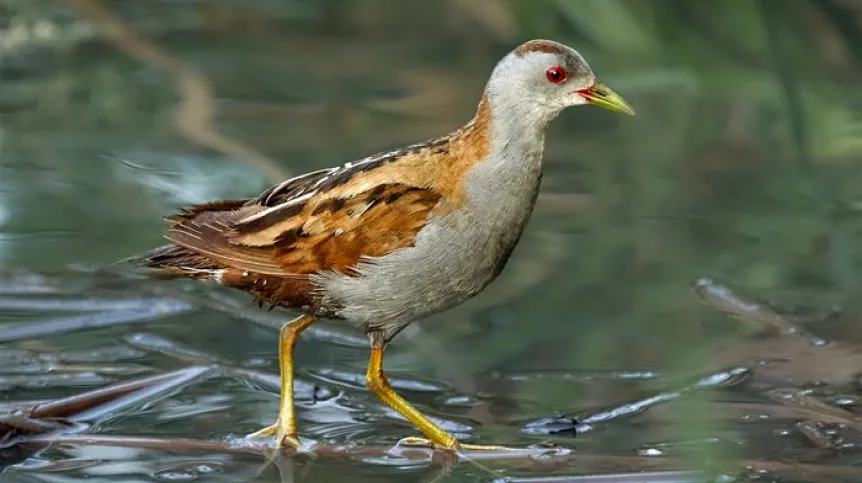
An inconspicuous and elusive wetland bird native to Poland called the Little Crake can produce some of the fastest and most precisely coordinated vocal duets in the bird world - without rehearsal, a new study by Polish biologists has revealed.
The findings, published in the prestigious journal Proceedings of the Royal Society B: Biological Sciences, show that these birds, despite their modest appearance, possess vocal abilities that rival or surpass those of tropical songbirds known for their complex acoustic displays.
The research was conducted by Dr. Jan Jedlikowski of the Faculty of Biology at the University of Warsaw and Dr. Paweł Ręk of the Faculty of Biology at Adam Mickiewicz University in Poznań.
“Duet singing is not unusual in the bird world,” the researchers said. “But it is especially common among passerine birds in the tropics.” In those regions, birds often form stable pairs that last most of the year, giving them time to learn each other's vocal patterns.
“Sparrow birds that have the ability to learn singing have enough time to remember the partner's repertoire and the order of syllables, which allows them to better adjust their voices in a duet,”
But the Polish researchers found that little crakes (Zapornia parva) can achieve remarkable vocal synchrony without any long-term bonding or rehearsal.
“They can perfectly synchronise with a complete stranger almost immediately after they meet,” said Jedlikowski. “This is possible by matching the rhythm and pacing of generated sounds. The constant rhythm and pace of singing allow the birds to predict when their partner will pause and match it perfectly.”
The little crake’s performance is exceptional in both speed and accuracy. While tropical duet-singing birds typically alternate vocalizations with delays ranging from 50 to 500 milliseconds, little crakes manage this with a delay of just 14 milliseconds.
Their songs can also reach an extraordinary pace of up to 30 sounds per second.
“It is a bit like two drummers who, when striking a quick rhythm, do not hear every single hit, but keep the pace and thanks to that they are perfectly harmonious,” Jedlikowski said.
This high-speed, high-precision duet requires the birds to be physically close. According to the researchers, this suggests that the duet may also serve as a signal of proximity between partners, a hypothesis they intend to investigate in future studies.
In contrast, passerine birds with more irregular and complex songs adjust their singing “note by note,” leading to greater delays and less overall synchronization.
“Their more irregular singing makes individuals match their voices somewhat 'note by note', making the delay between successive voices much longer than in the case of little crakes,” Jedlikowski said. (PAP)
jjj/ agt/













